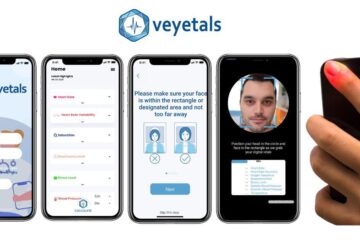Image Credit: Canva
It is critical to monitor your vital signs after surgery, including your heart rate, blood pressure, breathing rate, and body temperature. Monitoring these vital signs is critical for spotting potential issues and averting future health risk.
In this detailed tutorial, we will discuss the importance of post-operative vital sign monitoring and give you advice on how to do so efficiently.
Why is post-operative vital sign monitoring important?
The monitoring of vital signs following surgery is critical for spotting any issues that may emerge. Bleeding, infection, or an unpleasant reaction to treatment are examples of complications. Such issues can be detected early by monitoring vital indicators such as heart rate, blood pressure, and breathing rate.
Monitoring vital signs can also assist medical personnel in identifying potential problems with the patient’s healing process. For example, if a patient’s respiration rate is abnormally high, it may signal that they are in pain or discomfort, which the medical team can then address.
What are the vital indicators that must be monitored after surgery?
Heart rate, blood pressure, respiration rate, and body temperature are the four vital signs that are generally monitored following surgery.
Heart rate: The typical heart rate range is 60 to 100 beats per minute. Any variation from this range may suggest an underlying problem that must be resolved.
Blood pressure: The normal blood pressure range is 120/80 mmHg. Blood pressure measurements that are abnormal can suggest hypotension (low blood pressure) or hypertension (high blood pressure), both of which can lead to serious problems.
The usual range for respiratory rate is between 12 and 20 breaths per minute. Any deviation from this range could suggest respiratory distress, which could be an indication of underlying disorders such pulmonary embolism or pneumonia.
Body temperature: A normal body temperature range is 36.5 to 37.5 degrees Celsius. A fever or hypothermia may be caused by an illness or inflammation.
How should vital signs be monitored after surgery?
Following an operation, vital signs can be monitored using a variety of ways, including:
Manual monitoring is checking a patient’s vital signs manually with a stethoscope and a blood pressure cuff. It is the most accurate method of vital sign monitoring, although it is time-consuming.
Automated monitoring: Automated monitors are used to continuously monitor vital indicators. These monitors are linked to the patient’s body and offer continuous vital sign readings.
Mobile monitoring is the use of portable technologies that can be used to monitor vital signs while on the go. These devices are especially beneficial in situations when patients must be transported regularly.
What should you do if you observe any changes in vital signs after surgery?
If you detect any changes in your vital signs after surgery, you must notify your medical staff immediately. They can then take the appropriate steps to solve the problem and avoid further issues.
Abnormal vital signs may necessitate additional medical treatment, such as medication or more testing, in some instances. To ensure a smooth recovery, it is critical to carefully follow the directions of your medical staff.
Conclusion
Post-operative vital sign monitoring is critical for spotting potential issues early on and ensuring a smooth recovery. Medical personnel can recognise any difficulties that may occur and take the appropriate steps to treat them by monitoring your heart rate, blood pressure, respiration rate, and body temperature.
Remember to notify your medical staff right away if you observe any changes in your vital signs following surgery. You can assist prevent further harm to your health and ensure a successful recovery by doing so.
Introducing Veyetals, the cutting-edge contactless vitals monitoring app that is revolutionizing healthcare management. Our cloud-based API is lightweight and seamlessly integrates with the healthcare apps and platforms that matter to you most. With Veyetals, you can measure patient vitals in real-time, enhancing the continuum of patient care and improving health outcomes.
But Veyetals doesn’t stop there. Our app is interoperable with other health management solutions, ensuring information sharing between different systems and providing a holistic view of patient health. Plus, our easy-to-use interface makes it simple for healthcare providers to stay on top of vital signs and respond quickly to changes in patient health.
Ready to join the future of healthcare management? Contact us HERE to learn more about Veyetals. And don’t forget to follow us on LinkedIn for the latest updates and insights.



